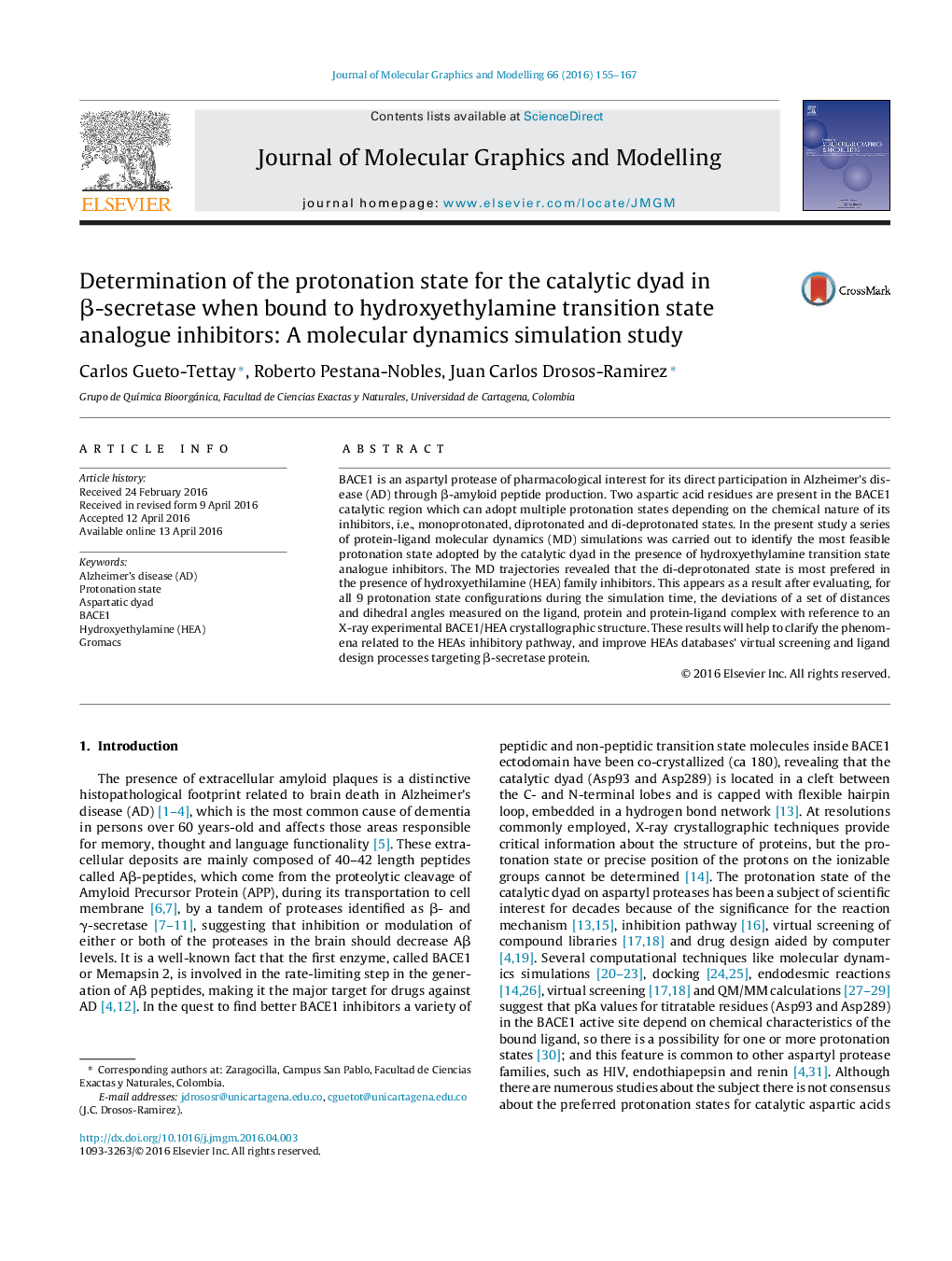| کد مقاله | کد نشریه | سال انتشار | مقاله انگلیسی | نسخه تمام متن |
|---|---|---|---|---|
| 443271 | 692696 | 2016 | 13 صفحه PDF | دانلود رایگان |

• A series of protein-ligand molecular dynamics (MD) simulations was carried out to identify the most feasible protonation state adopted by the catalytic dyad of BACE1 in the presence of hydroxyethylamine transition state analogue inhibitors. results revealed that the di-deprotonated state is most preferred one and clarify the phenomena related to the HEAs inhibitory pathway.
• The results in this study help to better understanding of the influence of different aspartic dyad chemical environments and their stability over time for BACE1/HEA complexes, leading to the inhibition pathway study and virtual screening process against β-secretase.
• It is likely that process starts with a monoprotonated Asp state and the HEA inhibitor as a neutral amine, then a proton is transferred from Asp289 to the nitrogen atom at the Core group in the ligand, leading to protein-ligand complex stabilization with a di-deprotonated Asp dyad and CM8 HEA inhibitor acting as a charged amine.
• The Docking of 3 non-crystallographic HEA containing inhibitors inside the β-secretase active site followed by a PM7 SQM optimization showed the stability of BACE1-HEA complexes using the AspUP configuration and no proton transfer was observed.
• The study demonstrated that it is always necessary to consider the protein-ligand system for this particular discussion of results, since the chemical environment in each Asp dyad configuration may affects the position of the inhibitor and some residues in the protein, which leads to conformational changes on both species.
BACE1 is an aspartyl protease of pharmacological interest for its direct participation in Alzheimer’s disease (AD) through β-amyloid peptide production. Two aspartic acid residues are present in the BACE1 catalytic region which can adopt multiple protonation states depending on the chemical nature of its inhibitors, i.e., monoprotonated, diprotonated and di-deprotonated states. In the present study a series of protein-ligand molecular dynamics (MD) simulations was carried out to identify the most feasible protonation state adopted by the catalytic dyad in the presence of hydroxyethylamine transition state analogue inhibitors. The MD trajectories revealed that the di-deprotonated state is most prefered in the presence of hydroxyethilamine (HEA) family inhibitors. This appears as a result after evaluating, for all 9 protonation state configurations during the simulation time, the deviations of a set of distances and dihedral angles measured on the ligand, protein and protein-ligand complex with reference to an X-ray experimental BACE1/HEA crystallographic structure. These results will help to clarify the phenomena related to the HEAs inhibitory pathway, and improve HEAs databases’ virtual screening and ligand design processes targeting β-secretase protein.
Pairwise Cα rmsd measured for 84 residues in the BACE1 active site and its vicinity.Figure optionsDownload high-quality image (204 K)Download as PowerPoint slide
Journal: Journal of Molecular Graphics and Modelling - Volume 66, May 2016, Pages 155–167